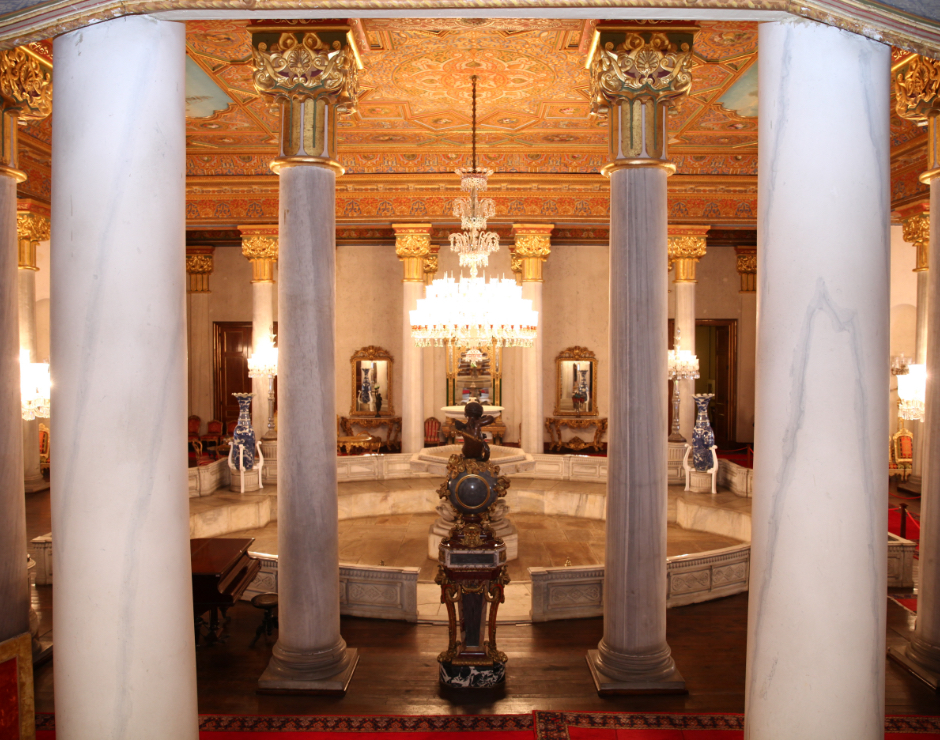
Beylerbeyi Palace and its location has been home to different structures since the Byzantine Period. The region was known as the “Garden of the Cross” from the Byzantine era until the beginning of the 19th century, with the first palatial building was constructed under orders from Mahmud II. Following a fire, Sultan Abdülaziz had the building demolished and rebuilt in order to strengthen the structure. The palace acquired its present appearance, along with its additional buildings covering an area of 3000 square meters, between the years 1863 and 1965.

Today, the main structure of the Mabeyn and Harem sections is open to visitors, as well as its additional structures serving different purposes: the sea pavilions, the historical tunnel connecting Üsküdar and Beylerbeyi, Yellow Pavilion, Marble Pavilion and the Barn Stables are also noteworthy.

Beylerbeyi Palace, which shows the effects of western style on its exterior and features of the classical Ottoman palace structure inside, has been mostly used as a summer palace since its construction. The notion that Beylerbeyi is also a guest house allocated to high-level state guests, hosting Austrian Emperor Franz Joseph, French Emperor Napoleon III’s wife, Empress Eugénie, the German Emperor Wilhelm II, and Prince Nikola of Montenegro among others.

An Elegant Architecture
Beylerbeyi Palace, along with Dolmabahçe Palace, is one of the remarkable palaces of Istanbul, notable for its ornaments. Elegant workmanship, where Neoclassical, Baroque and Renaissance art styles can be traced, draws attention in Beylerbeyi’s interior architecture and details, as well as its exterior.

Beylerbeyi Palace, which blends western and eastern styles in its architecture, shows the characteristics of Turkish House in terms of floor plan. There are 24 rooms and 6 halls in the three-storey building, including the basement. Most of the flooring is made with special mats brought from Egypt and the palace's rooms and rooms are decorated with hereke carpets, Baccarat crystal chandeliers, European and Ottoman clocks and Far Eastern porcelain.

One of the most striking details of Beylerbeyi Palace's decoration is the ceiling ornaments. Sultan Abdülaziz, who had the palace built, personally took an interest in the decoration of the palace. A monarch with a keen interest and talent in painting, Sultan Abdülaziz personally sketched examples for ornaments and brought painters from Europe. The ornaments, which were handled by the master's names in the field of pen work and calligraphy, have a rich variety in the palace.

written by Directorate of National Palaces